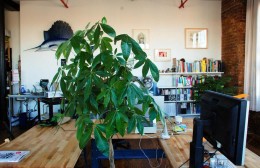One Company’s Productive Work Set-up

In the early ’90s, a Dutch insurance company wasn’t doing so well and hired McKinsey, the famous consulting firm, to come in and help them. Layoffs followed, nothing changed, and so the company turned to a design consultant named Erik Veldhoen to help them:
Veldhoen and his company came up with a simple plan to increase productivity at Interpolis. They created a variety of work settings on each floor — private offices, partially open spaces, and totally open spaces. Dedicated personal desks were abolished. Workers now had lockers, a “home zone” where they worked each day, and an employer-issued mobile phone. And they were now permitted to work from home as much as they needed — typically one or two days a week.
Management’s fears that workers would simply disappear turned out to be unfounded. According to one study from the Center for People and Buildings, a Dutch research institute, workers at Interpolis sought more interactions with their colleagues, and overall internal communication increased. Years of environmental psychology papers had suggested that the requirements of status and privacy, as well as the desire to personalize the workspace (with photos, for instance), were large barriers to “flexible working” without a desk of one’s own, but after some initial resistance, workers adapted quickly to their new arrangements. Although they tended to sit in the same spot each day, they seemed to like what the “activity-related” layout represented: a belief in their own ability to organize their work, and their workdays, to suit themselves. Here was a notion of self-management at odds with nearly a century of theorizing, going back to the days of Frederick Winslow Taylor’s carefully choreographed factory floors.
This is an excerpt from Nikil Saval forthcoming book Cubed: A Secret History of the Workplace, which comes out next month. The excerpt is paywalled by Harper’s, where I am a subscriber, but the book itself looks fascinating so I may pick it up and interview the author at a later date for this here site.
Photo: Eric
Support The Billfold
The Billfold continues to exist thanks to support from our readers. Help us continue to do our work by making a monthly pledge on Patreon or a one-time-only contribution through PayPal.
Comments